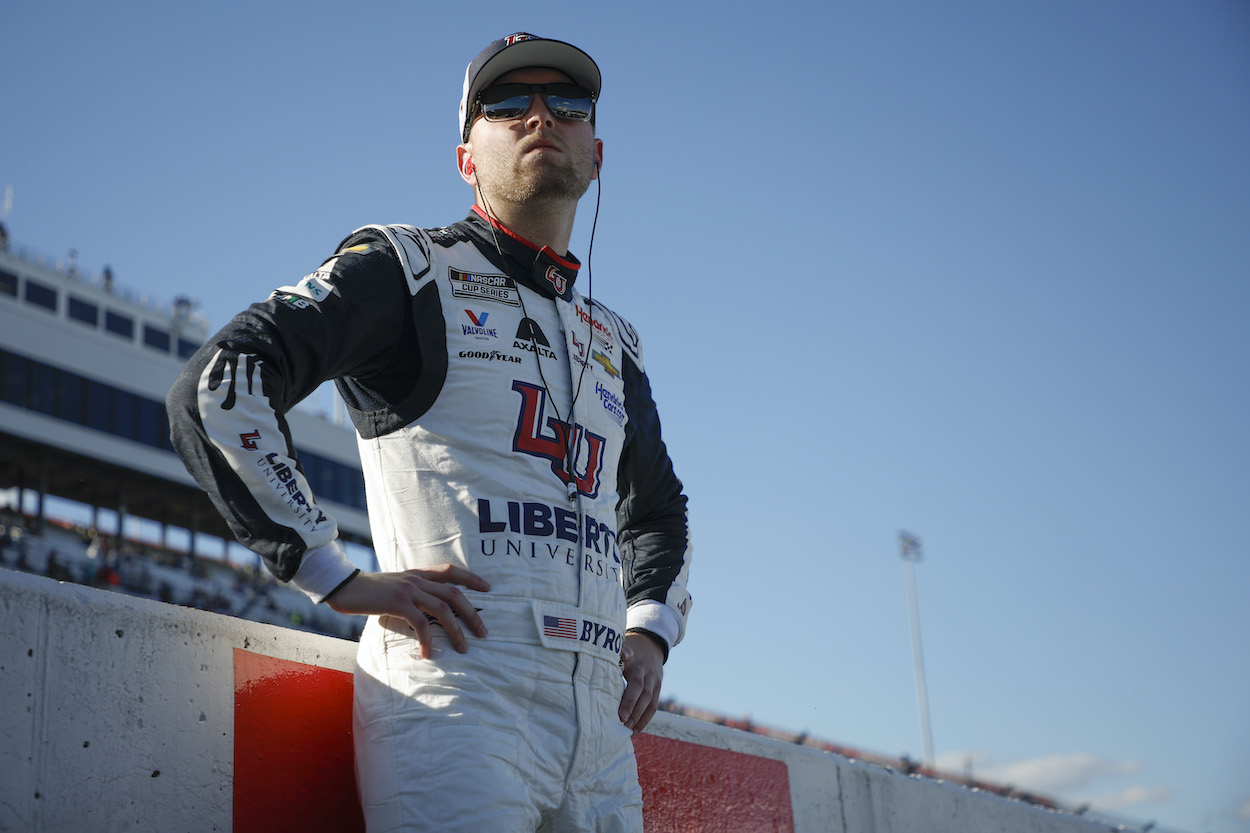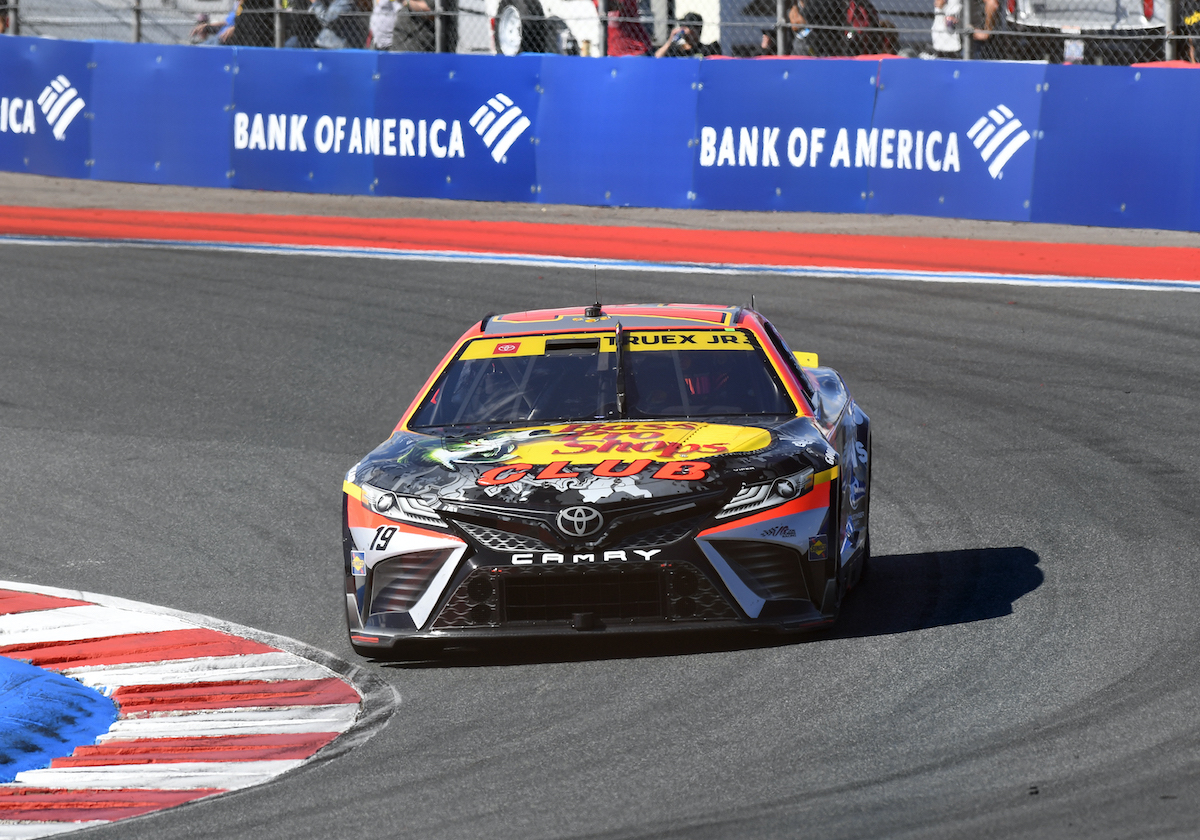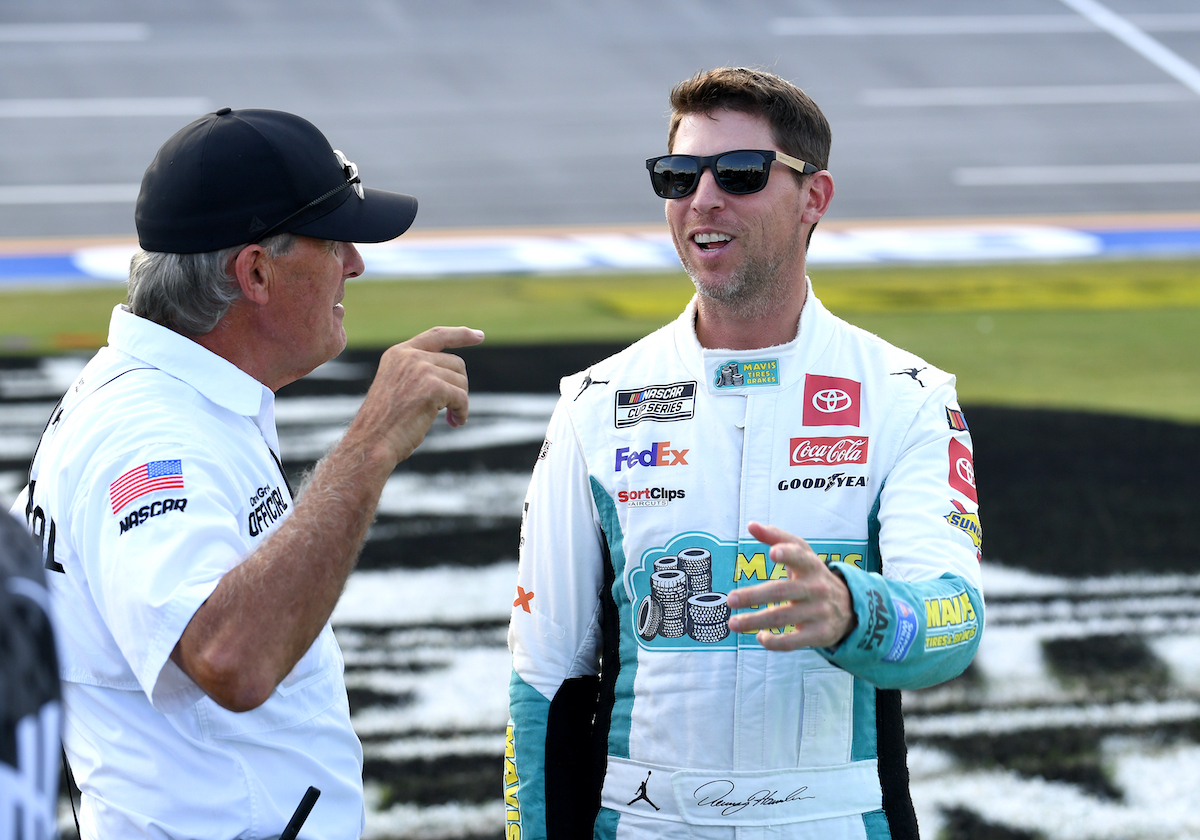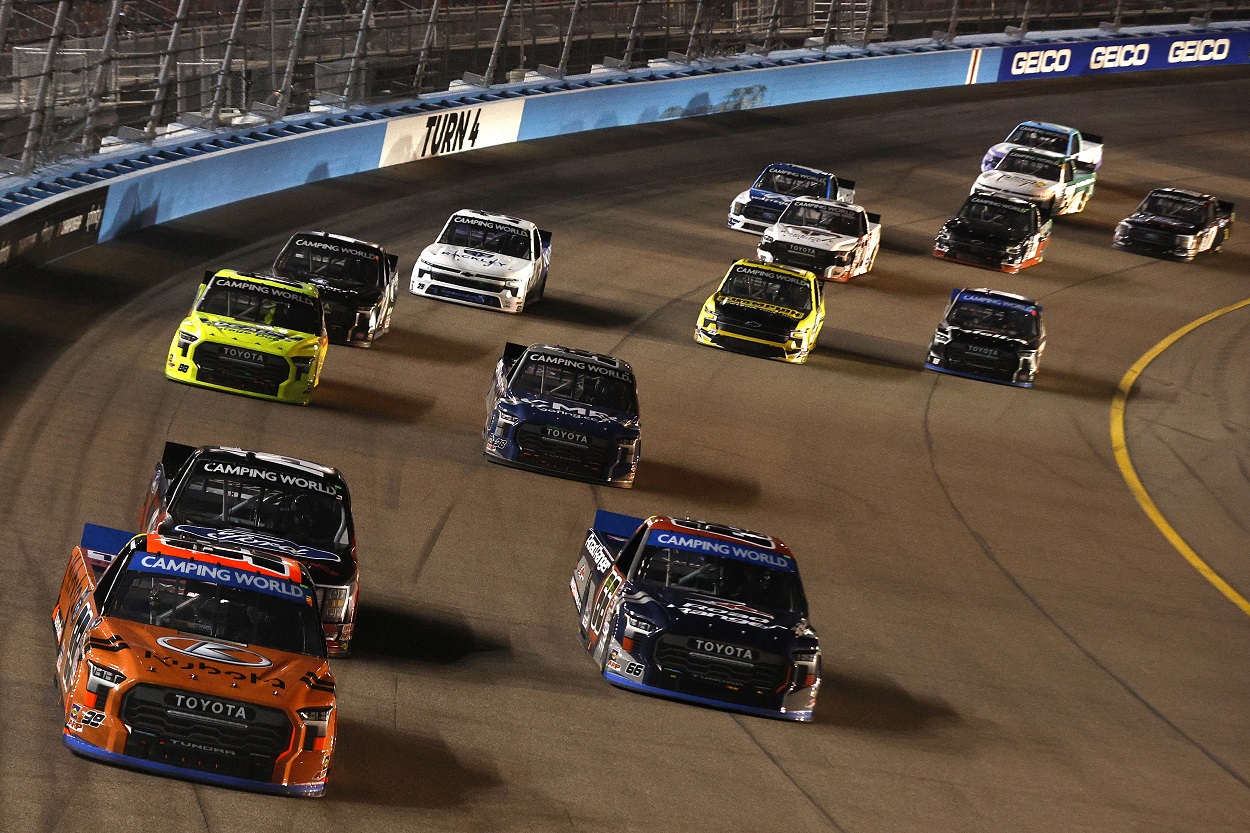
The New Name Isn’t the Only Old-School Change Coming to the NASCAR Truck Series
The NASCAR Truck Series will continue to return to its roots in more ways than just longtime and original series sponsor Craftsman returning as the title backer for the circuit.
NASCAR created what was initially known as the SuperTruck Series by Craftsman in 1995. It was then the Craftsman Truck Series from 1996 to 2008 before Camping World stepped in as the title sponsor in 2009. Craftsman will return as the title sponsor in 2023, as will some old-school tracks.
The NASCAR Truck Series was initially a short-track series on tracks separate from the Cup Series
The Truck Series debuted primarily on short tracks and visited many places beyond the Cup Series and Xfinity Series schedules. The 1995 season’s 20 events featured 18 races at tracks one mile in length or shorter, and many of those facilities were west of the Mississippi River, a side of the country mostly untapped by NASCAR at that point. But the series now races on tracks in Arizona, Oregon, Colorado, California, and Kansas.
In contrast, the 1995 Cup Series schedule featured only two races in the country’s western half. The Sonoma Raceway road course in northern California hosted a Cup Series race in May, and Phoenix Raceway in Arizona was the penultimate stop of the season in late October.
The Truck Series began to carve its niche in the sport with races on unique tracks that featured close, physical racing because of the nature of competition on short tracks. The series visited places such as North Wilkesboro Speedway, the Milwaukee Mile, and Indianapolis Raceway Park (since renamed Lucas Oil Raceway) for years until they all eventually fell by the wayside.
The Truck Series became mostly a support series for Cup Series race weekends
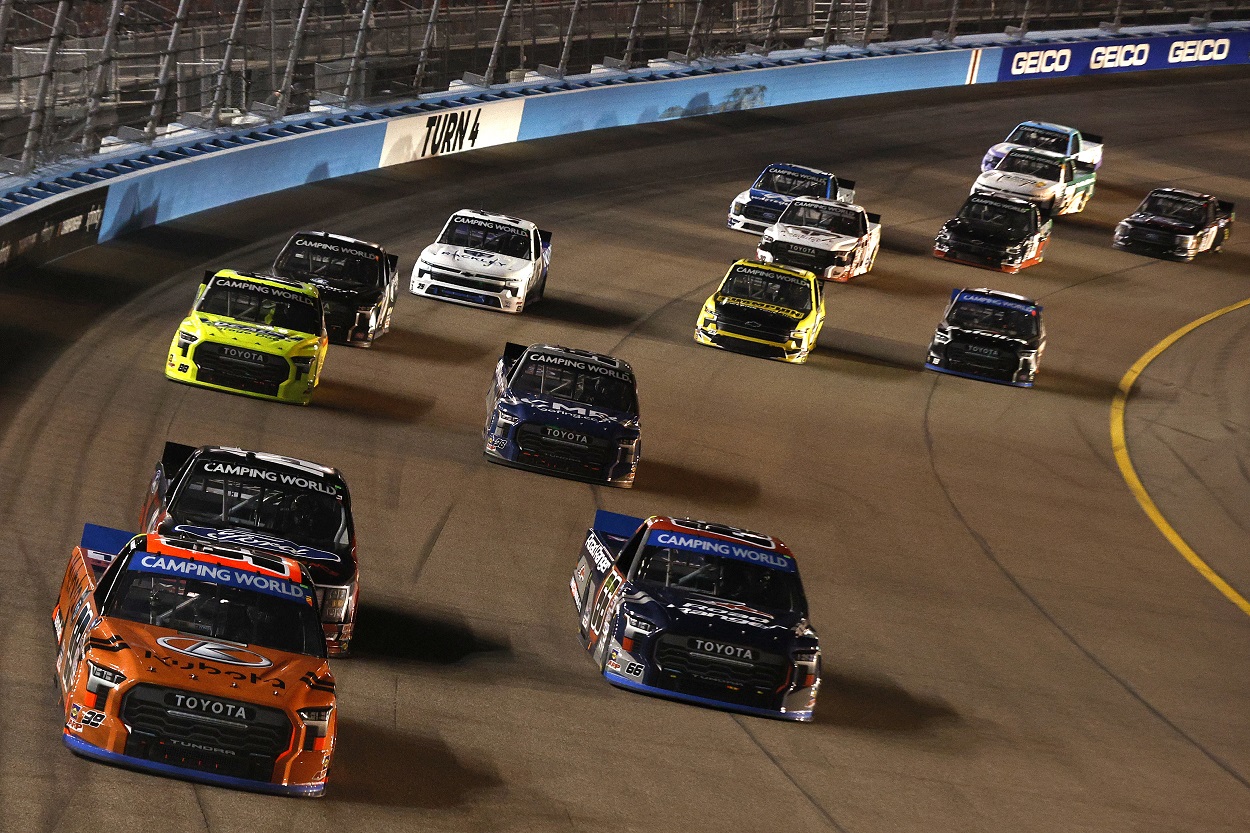
The Truck Series ran only twice at North Wilkesboro, which had held NASCAR races since 1949 before the entire sport dropped the 0.625-mile facility in North Carolina from its schedules after the 1996 season and moved to intermediate tracks in large media markets such as Los Angeles and Dallas.
The 0.686-mile track at Indianapolis Raceway Park had been a staple in the Xfinity Series since the tour’s inception in 1982, and the Truck Series joined from 1995 to 2011 until the Xfinity Series jumped to the 2.5-mile Indianapolis Motor Speedway across town to create a tandem weekend with the Cup Series at the giant facility. The Truck Series simply dropped the race date, as it decreased from 25 races per season to 22.
The Milwaukee Mile, one of the country’s oldest race tracks created in 1903, had hosted Xfinity Series races from 1984-1985 and again starting in 1993. The Truck Series also started to tag along beginning in 1995, and both ran at the historic track through 2009.
The Truck Series began to race more and more at the same tracks as the Cup and Xfinity series each weekend. By 2014, the trucks ran only four events at tracks separate from the Cup Series.
The addition of a race in 2013 at the Eldora Speedway dirt track in Ohio tried to help fill the void since stock car racing began primarily on dirt tracks in the early days. Eldora was last on the Truck Series slate from 2013 to 2019, despite the circuit previously never running on dirt. The Knoxville Raceway dirt track in Iowa hosted a Truck Series event each of the past two seasons but is not on the schedule for 2023.
IRP, North Wilkesboro, and the Milwaukee Mile are all welcome returnees to the Truck Series schedule
Instead, the Truck Series has clawed back a small segment of its original identity. After it opened the 2022 playoffs with a thrilling race in a return to IRP, the series will open its postseason there again in 2023. It will also race at North Wilkesboro the day before the Cup Series All-Star Race in May.
In another surprising move, the series will make a return to the Milwaukee Mile in late August to highlight a weekend of racing with the ARCA Menards Series, which returned to that track in 2021 in a race won by Ty Gibbs.
NASCAR has lost much of its tradition in the past two decades, and the desertion of tracks such as IRP and the Milwaukee Mile were evident signs of the problem. Sure, more money existed in the larger markets on the larger tracks, but it also largely watered down what was once unique and fun about the Truck Series and often turned it into just one of three races at the same track as the other two series, which mostly had more recognizable drivers.
Rockingham Speedway in North Carolina is another track left for dead by NASCAR that is currently getting a repave. The Truck Series raced there twice from 2012 to 2013, so maybe “The Rock” will be the next old track to return to a NASCAR schedule.
If not, at least fans will once again get to see some sort of racing at tracks they either remember from long ago or have heard stories about and will finally get to see for themselves. Either way, it is a step back in the right direction.
Have thoughts on this topic? Keep the conversation rolling in our comments section below.
